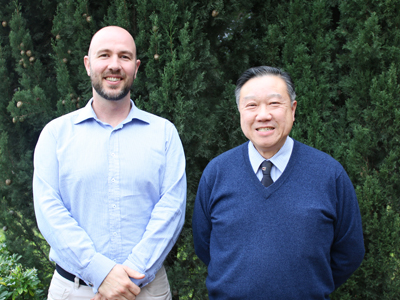Bio-terrorism algorithm forecasting flu outbreaks

An algorithm developed by Defence scientists to detect bio-terrorism is now being used by the Victorian Health Department as an influenza forecasting tool.
The tool can accurately predict flu outbreaks up to eight weeks in advance, giving the public health system a better chance to minimise the impact of the outbreak.
The system is now also being experimentally deployed across NSW and QLD and Defence scientist Tony Lau says the aim is to get it operational across most of Australia in time for next year’s flu forecasting season.
“Until now we’ve been focused on developing in-house skills in the detection and forecasting of naturally occurring diseases as well as agents that might be used in bio-terrorism,” Lau says.
“We have successfully established significant expertise, using state-of-the-art particle filter techniques and Bayesian networks, to deal with real-world uncertainties in disease forecasting.”
”Exposure to many conventional bio attack agents will initially present in victims as showing similar symptoms to an influenza-like illness (ILI) infection, it is imperative we develop capabilities that can clearly differentiate between an outbreak of naturally occurring ILI infections and a biological attack.”
The algorithm known as EpiDefend is a combination of fusion of data from lab-confirmed influenza cases, anonymised GP reports and other environmental data such as humidity were tested. This strengthens the reliability, accuracy and timeliness of detecting an outbreak from naturally occurring ILI and maliciously released biological agents.
The challenge confronting the scientists has always been that DST is not a custodian of the health and disease data upon which accurate and reliable forecasting relies.
A recent collaboration with the University of Melbourne School of Population and Global Health has helped overcome these restrictions and DST now has a foothold in public health disease prediction.
As most existing natural disease outbreak detection systems only scrape the surface of the available health data. Researchers from Tony’s team have taken a different approach and as a result the EpiDefend can potentially issue an earlier warning of outbreaks than has previously been possible.
“Our team was the first in the world to apply particle filters to disease forecasting, and the combination of techniques used in EpiDefend makes it a world-leading innovation,” says Lau.
“Given the exponential increase in electronic data collection and our algorithm’s ability to dig into these very rich streams of information, the approach has the potential to provide a breakthrough in disease forecasting.”
DST’s disease forecasting research was recently recognised with a $A1 million funding support over two years from the US Department of Defense Coalition Warfare Program to develop a key component of a global bio-surveillance system.
”Our team’s goal is dual-purpose, we want to fulfil our defence charter, protecting our forces against intentionally released biological agents, but disease forecasting will also support the national security and public health areas,” Lau explains.
“With the Coalition Warfare Program funding we’ll be setting up two additional post-doctoral positions to develop decision support tools for response to disease outbreaks.”
“It’s exciting and busy times, and we are ready to contribute to the development of a national and global bio-surveillance system.”

